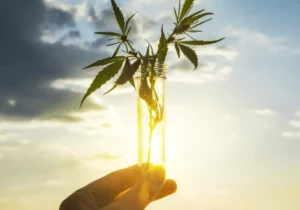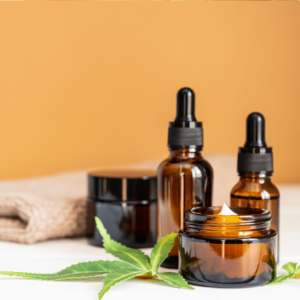"Asking for a friend."
Hi there!
As a part of normal aging, the spine can develop arthritis. As the arthritis progresses, bone spurs form and enlarge, and the ligaments around the joints thicken to a point when the spinal canal narrows enough to compress the nerves—which leads to neuropathic pain.
While arthritis and stenosis cause different types of pain, CBD should help alleviate both types. Arthritis causes nociceptive pain, whereas spinal stenosis eventually leads to neuropathic pain.
Nociceptors are pain receptors that detect when there is a threat to your body, which then tell your brain to respond to the threat. NSAIDs and opiates work well at treating this type of pain, because they interrupt the transmission of pain signals traveling from the site of injury to your brain.
Neuropathic pain, on the other hand, is due to damage to the nerve itself, which causes pain signals to continually fire, even if there is no injury elsewhere. Neuropathic pain is often described as a tingling, burning or electric feeling. If you suffer from neuropathic pain, then I’m sure you’re well aware that this form of pain is extremely difficult to treat.
drkim
Several studies suggest that cannabis can help alleviate the pain of arthritis (nociceptive pain). And while cannabis research has historically focused on THC, synthetic cannabinoids, or our own naturally occurring cannabinoids (endocannabinoids), there is an evergrowing body of research regarding the potential medicinal benefits of CBD. In fact, a recently published study concluded that "topical CBD application has therapeutic potential for relief of arthritis pain and inflammation"
https://mg.mail.yahoo.com/d/compose/7963612517
In a study with exciting implications, researchers concluded that "CBD, through its combined immunosuppressive and anti-inflammatory actions, has a potent anti-arthritic effect" which may even "block the progression of arthritis."
https://www.ncbi.nlm.nih.gov/pubmed/10920191
In a study published in the British Journal of Pharmacology, researchers found that chronic administration of CBD prevented paclitaxel-induced neuropathy (PAC) (paclitaxel is a common chemotherapy agent which often causes neuropathic pain). Interestingly, they found that the cannabinoid receptors CB1 and CB2 were not involved in preventing the pain from developing. Rather, they concluded that CBD is protective against PAC-induced neurotoxicity mediated in part by the serotonin receptor system. Modulation of the serotonin receptor system is also the method that antidepressant drugs are thought to affect neuropathic pain.
https://www.ncbi.nlm.nih.gov/pubmed/24117398
drkim
Furthermore, there are also several pre-clinical studies showing that CBD is effective at treating both inflammatory (nociceptive) and neuropathic pain. Again, researchers determined that the CB1 and CB2 receptors were not involved in the neuropathic pain relief. Instead, they determined that the pain relief was derived from CBD’s ability to modulate the TRPV1 receptor—the same receptor responsible for transmitting pain from contact with pepper spray and eating chili peppers.
https://www.ncbi.nlm.nih.gov/pubmed/15313881
Cannabidiol’s activity was also associated with a reduction in the content of several inflammatory mediators, including prostaglandin E(2) (PGE(2)), lipid peroxide and nitric oxide (NO), and in the over-activity of glutathione-related enzymes.
https://www.ncbi.nlm.nih.gov/pubmed/17157290
There is also a significant amount of research showing that Sativex — an oromucosal spray with 1CBD:1THC — effectively reduces neuropathic pain. In 2005, Sativex was approved in Canada for the treatment of central neuropathic pain in multiple sclerosis, and in 2007 for intractable cancer pain. Numerous randomized clinical trials have demonstrated safety and efficacy for Sativex in central and peripheral neuropathic pain, rheumatoid arthritis and cancer pain.
https://www.ncbi.nlm.nih.gov/pmc/articles/PMC2503660/
I hope this helps!
drkim





